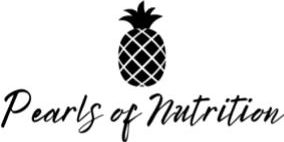
I will be the first to say that dairy is awesome and I love it. I understand that some people cannot tolerate dairy products, and for that I am grateful that there are many alternatives available. However, something I work on with my clients is if you do not have any medical necessity to cut out dairy from your intake, it’s a really awesome food group to work with!
Dairy products usually provide us with carbohydrates, protein, and fat (barring skim/nonfat options), which are the three macronutrients- these are the nutrients that give us energy. Dairy products also include our micronutrients, vitamins and minerals, as well as water. Cumulatively, these are the six life-sustaining nutrients. Few other food groups offer all six nutrients. Our bodies really enjoy when we consume meals/snacks that incorporate all three macronutrients and satisfaction with meals can be improved by doing so, which makes dairy products a really easy way to bring in those nutrients in a neat little package!
Dairy products can come in a variety of fat percentages. It is important to find the percentage of milk fat which is most satisfying for you- not your eating disorder. Fat is a source of flavor and thus satisfaction with meals, so low/reduced/no fat products can quite literally translate to low/reduced/no flavor or satisfaction. In addition to this, one of the big nutrients we know milk for is vitamin D which is a fat soluble nutrient. Without fat, we simply cannot absorb this nutrient properly rendering non-fat dairy products actually less nutritious. If you notice that you have any lingering food rules around incorporating higher milk fat percentage items, as any of my clients could tell you, my #1 recommendation would be “well that means it is a great thing to challenge and start including!”
Looking for a new way to enjoy dairy? Check out the smoothie recipe below. Especially in these warmer months when we may not have the desire to put as much time or effort into meals or snacks, something like a smoothie can be a great option; applying gentle nutrition to find a preparation that provides fullness and satisfaction though is really important! And for me that comes in the form of a higher milk fat percentage Greek yogurt that I recently discovered at Wegman’s grocery stores – without this addition smoothies did not do enough to tide me over and I would still need to think about what else I could eat with them. As we know when you are left in a place of not knowing what to eat, you may default to just not eating enough.
Any of the above paragraph resonate with you? With a trained Registered Dietitian you can start to figure out what foods are most filling and satiating to you, break with food rules, and challenge disordered eating behaviors. Interested in working with someone? Visit our “Work With Us” page to get started.
Smoothie recipe (yields 1 serving)
● ¾ c 10% milkfat Greek yogurt (brands that make this % include Wegman’s, Cabot, and Liberte)
● Your choice of 1-2 fruits (1 banana, 1 c berries, melon, pineapple, mango, etc)
● 2 c raw leafy greens
● Liquid of your choice (½ c of fruit juice or milk. Option to mix in a nutritional supplement such as Ensure or Boost as needed per your team)
● You can also add items such as seeds, nuts, nut butters, avocado, oats, or granola to your smoothie to increase energy density and flavor!
General exchanges if you are on an exchange based meal plan for 1 serving: 3 fat, 2 protein, 1-2 fruit, 1 veggie
Add an additional 0.5 dairy if including milk and 1 additional fruit if including ½ c fruit juice
You tell us: what are your favorite ways to incorporate dairy in your diet?
